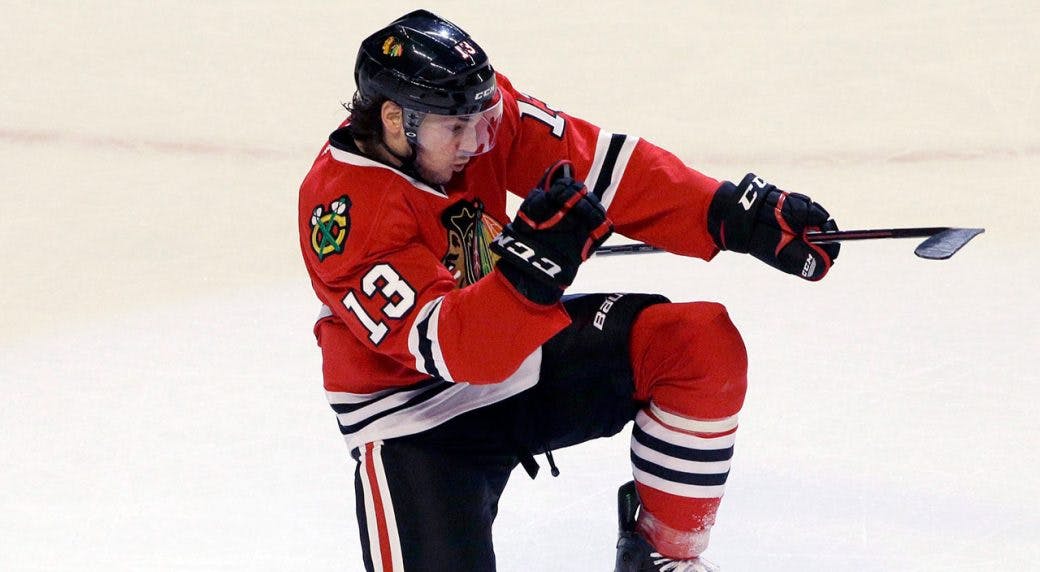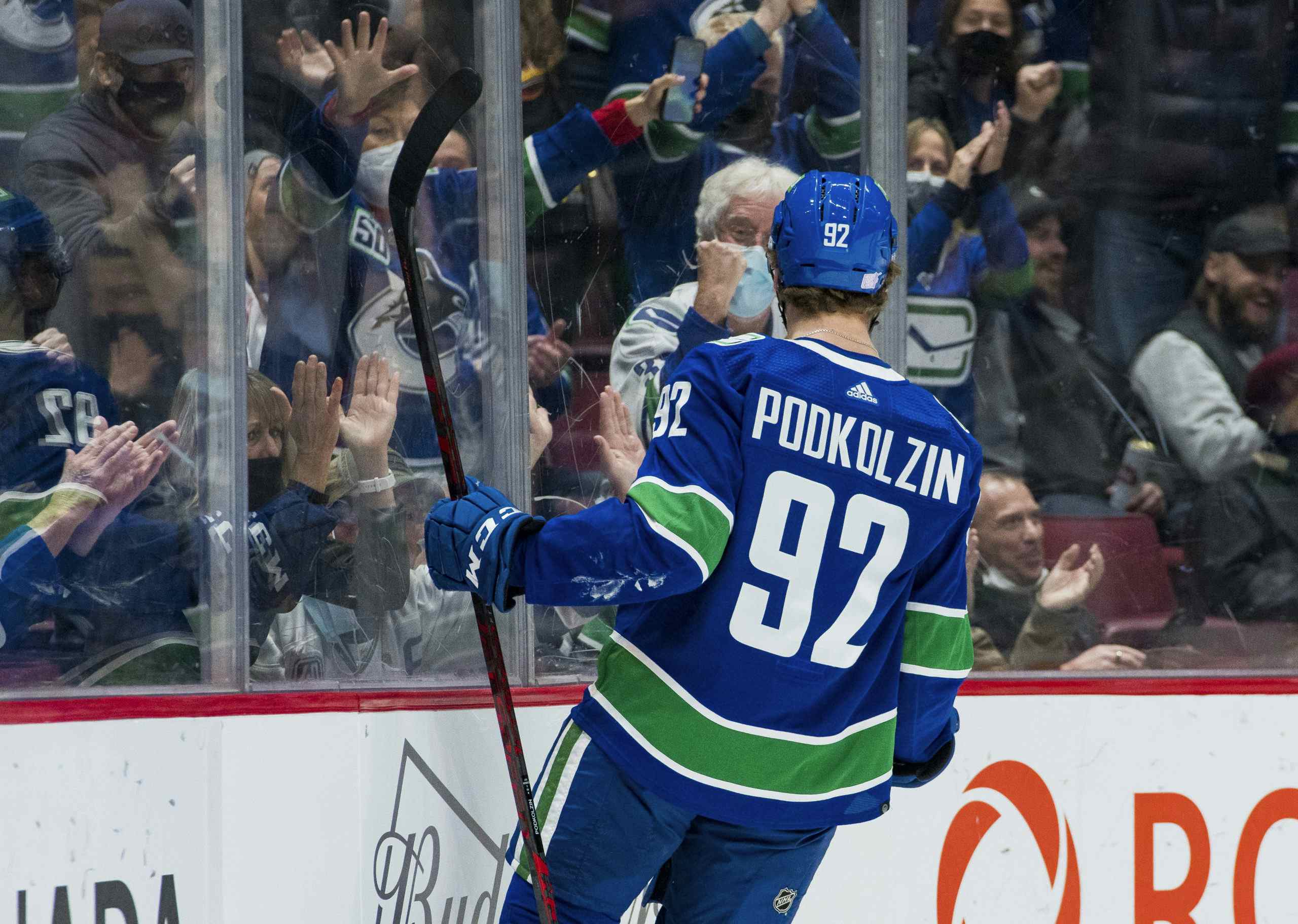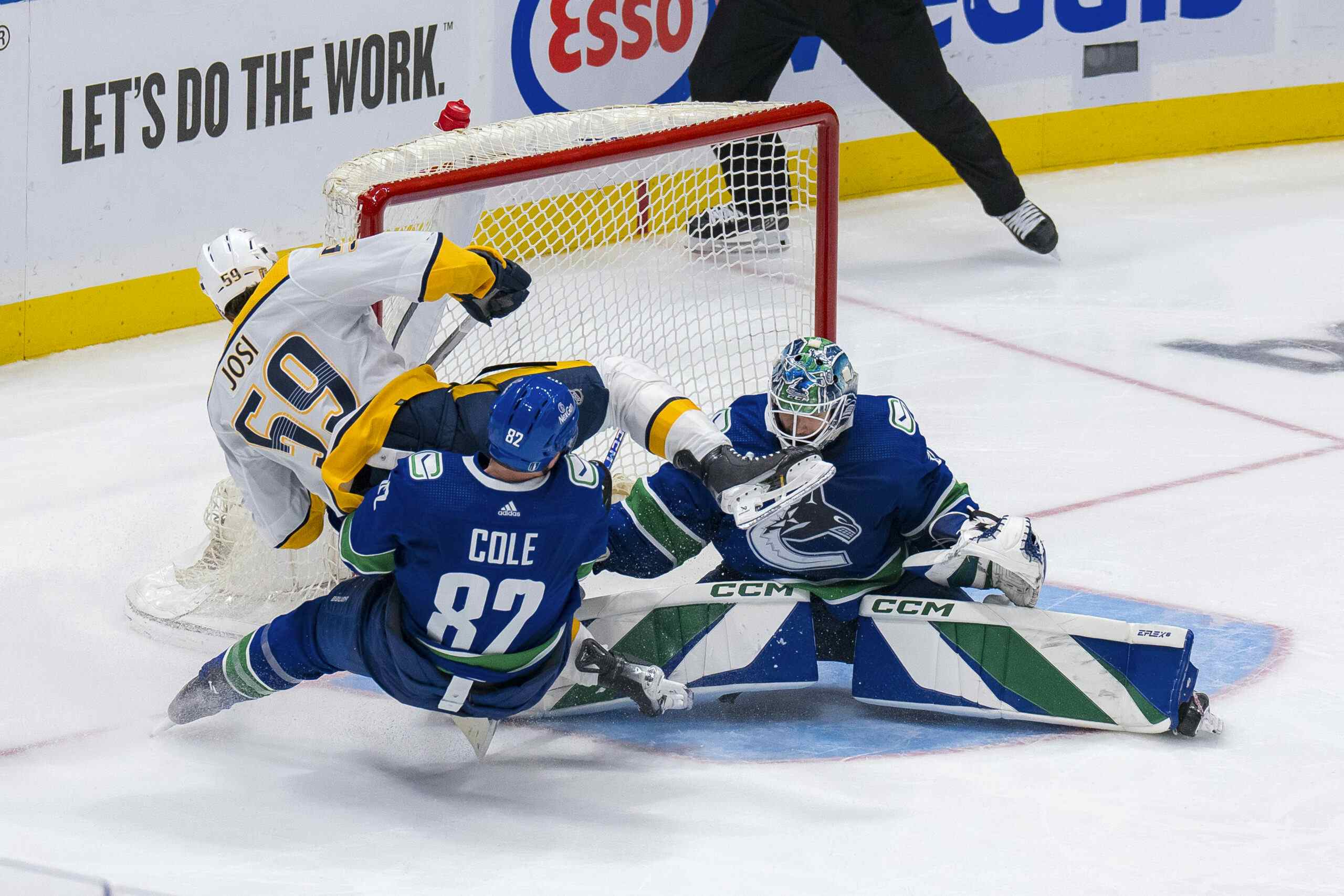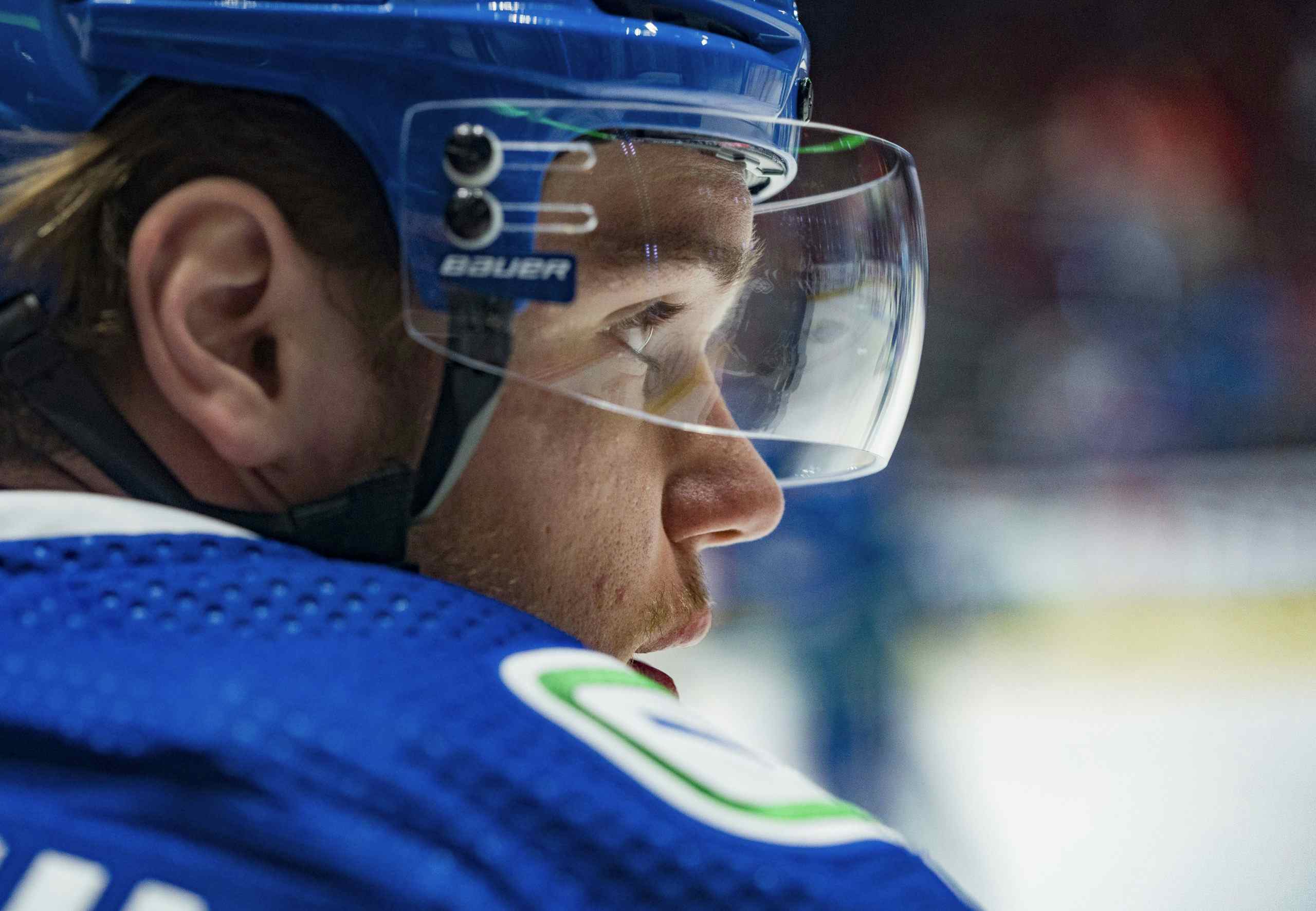The Flying Take: Boeser’s Contract, Stecher’s Scratch, and Hockey’s Hazing Problem

5 years ago
Our long national nightmare is finally over.
William Nylander has mercifully signed a six-year deal with the Maple Leafs worth just over 45 million dollars. It’s an unconventionally structured deal that has newly minted AGM Laurence Gillman’s name written all over it.’s The contract will set the tone for the organization’s negotiations with their other young players, and given that Nylander’s AAV has come out significantly under the figure many were quoting in the media, it’s looking good for the Center of the Universe. Losing out on Nylander to at the 2014 draft has been a topic that’s been dissected ad nauseam online over the past four years, but losing Gillman to the Leafs may end up being the tougher pill to swallow.
But enough about Toronto. We’ve heard the refrain “how does this affect the Leafs?” enough times for it to become a well-known cliché. So it’s time to finally turn the tables and ask: how does this affect the Canucks?
Brock Boeser is currently in the last year of his entry-level deal, and he’s indicated he’s more than happy to wait until the end of the season. He’s due for a big raise, with some folks speculating after his rookie season he could get as much as 8 million a year.
Something tells me that’s not happening now.
Boeser and Nylander are fairly comparable players. Nylander posted back-to-back 61-point seasons in his first two full years. Boeser finished last season with 55 points in 62 games and is on pace to put up similar numbers again this year. Boeser’s point-per-game pace and goal-scoring ability is better, but his injury history puts them on equal footing.
If I were a betting man, I’d say his AAV doesn’t come in a hair over 7 million. Jim Benning should send his old employee a thank-you card.
1. Speaking of contracts, you have to think the Canucks are searching high and low for ways to unload Loui Eriksson’s six million dollar cap hit. His deal becomes surprisingly movable after next year, after bulk of his signing bonuses have been paid. That leaves the usual list of budget teams as possible trade partners. There’s also been word that the Montreal Canadiens had interest at last year’s deadline, but couldn’t get a deal done. Even with the decrease in the actual dollar figure, I don’t see the Canucks moving him without retaining salary. That is, unless they take salary back. One option I haven’t heard anyone mention yet is the Boston Bruins. They have their own aging, once-great underperforming forward in David Backes. Backes has struggled perhaps even more than Eriksson has through the first third of the season. Could he be a fit? He has the same ugly cap hit, but a year less on his deal. The Bruins get a slightly younger forward who’s produced more as of late, and take a bet on a player who’s had success there in the past. The Canucks get help in the faceoff circle and cap relief in time for them to sign Elias Pettersson and possibly even Quinn Hughes to their second contracts. Plus, there’s no one left on the team to ask him about Kelly.
2. Troy Stecher found himself in the press box for a game against the Los Angeles Kings last week, to the surprise of many. It was a puzzling decision, given that the underlying data suggests Stecher has been the Canucks’ best two-way defender this season. He leads all Canucks defenders in shot contributions and Corsi-for percentage, but has the team’s second-lowest TOI average per game among defensemen, and his usage on special teams has been scant. It’s easy to get frustrated, but it’s worth noting that the numbers suggested the same thing about Ben Hutton last year, and he received more or less the same treatment. The fact that Hutton’s taken such a major step this year could be cause for praise or criticism when it comes to Travis Green’s approach, depending on how you look at it. It’s all about intention. If Green is trying to motivate Stecher and mold him into a better defenseman, that’s understandable. If he legitimately believes Stecher isn’t one of his best six defensemen, then it’s a concern.
3. (Content warning: abuse.) Former NHLer Daniel Carcillo made headlines again this week for speaking out about abuse he suffered as a rookie over the course of the 2002-2003 season with the OHL Sarnia Sting. On Twitter and in interviews with CBC’s HNIC Podcast and The National, Carcillo described how he and the team’s other rookies were subjected to vicious hazing rituals that included beatings with a sawed-off goalie stick; forcing rookies to kneel in the showers while veterans spat or urinated on them; and “hotboxing”, the practice of stripping groups of players down to their underwear, locking them in the bathroom, and spitting chewing tobacco on them through the vents. In one particularly harrowing incident, Carcillo recounted how one rookie was stripped naked, tied to a table, and whipped with his own belt. When the incident was overheard by a coach, he allegedly responded by cracking jokes with the veterans and participating in the whipping himself.
Carcillo’s story is coming at a time when the old ideas of masculinity are being challenged and redefined in the broader culture. Hockey has always had a “warrior” mentality that’s left generations of emotionally and physically damaged men in it’s wake. Carcillo’s honesty and vulnerability offers a new path for players who have been victimized by institutional and cultural violence in hockey. It’s remarkably brave, and Carcillo deserves credit for calling “hazing” what it is: abuse.
4. If you’d like an example of what “completely missing the point” looks like, TSN’s Jeff O’Neill has you covered:
5. To the surprise of many (including myself), Don Cherry emerged as a surprisingly progressive voice on the topic of hazing in last night’s edition of Coach’s Corner:
“I’ve played in every league in existence… I’ve seen guys ruined through hazing, I really have…I’ve seen broken arms, I’ve seen everything… When I was in junior, I swept the buses with the rest of the rookies, I carried the bags and everything, helped the trainers, put the pucks away- that’s not hazing… you’re a rookie, you do that… The OHL had meetings… if you’re a coach and you have hazing, you’re gone, you’ll never be hired again. So cut it out! I never liked it.”
So, the next time Jeff O’Neill opens his mouth about literally anything, you can remind yourself that his views on hazing are significantly more retrograde than Don Cherry’s.
6. Carcillo offered his own opinions on O’Neill in his appearance on the HNIC Podcast: “You have guys like Jeff O’Neill, who don’t understand, who make condescending comments about abuse… it’s guys like him that drive stigma about mental health and about abuse victims coming forward…
“I grew up in King City with Jeff O’Neill. If you wanna learn about somebody’s character, go back to King City and ask people about me and then ask them about him.”
As bad as Carcillo’s experiences were, others have had it even worse. In his own interview with The National, Carcillo’s former teammate Charles Amodeo discussed his own experiences with hazing. It’s a must-see for anyone interested in the topic.
Failed to load video.
The highlight of the interview came at the end, when he was asked about his feelings toward the game of hockey and how he would feel about his own children playing at the junior level:
“To be very blunt, I don’t even play anymore. I volunteered with a AAA team a couple years ago and just being around the rink… it made me sick.”
Judging by what’s been implied by Carcillo, Shawn Matthias, and others, we may just be scratching the surface of how deep this problem goes.
7. These stories of abuse come amidst a backdrop of related OHL controversies. Earlier this month, Ontario’s new provincial government announced the league would be excluded from provincial employment standards legislation, maintaining the status of the players as amateur athletes and prevents them from being defined as employees and regulated by the province’s Employment Standards Act. Last April, a class action lawsuit was also filed on behalf of former CHL players seeking $180 million dollars in back pay.
Carcillo’s comments will put the league in the spotlight for a third time in recent memory, once again in a negative context. Coupled with the 2017 lawsuit, it ought to re-ignite interest in a CHL player’s union. The players came close to forming a player’s association in 2012 under guidance from former NHLer Georges Laraque, but it fell apart at the last minute. For all the talk of wanting a minimum wage, the proposed CHLPA’s demands were rather quaint at the time. Chief among them were calls for players to receive more help transitioning out of the hockey world and broadening scholarship eligibility to include older players. The next time around, chances are they’ll be a lot more demanding.
The CHL has improved in a number of respects over the past decade or so, including how they deal with the issue of hazing; but Carcillo’s comments should make it clear that players need more avenues to exert control over their well-being, not less. In Ontario, OHL players will still be afforded protection under the Occupation Health and Safety Act, but the OHL has clearly dragged it’s feet when it comes to doing right by their players. Because junior hockey offers its best players the chance at NHL superstardom, it’s easy to forget that most players never go on to have a career in hockey. Even for those who do, it’s left many emotionally and physically scarred, and ill-suited for a transition to life outside the sport.
8. Last month, America’s best worst Canadian sports podcast, Real Good Show, said goodbye to two of their three hosts in Stefan Heck and John Cullen. For just over three years, together with Justin Morrissette, they mined the absurdity of the pro sports world for comedic gold, with the Vancouver Canucks as frequent targets. For those of you that are unfamiliar, their interview with former Canuck Kyle Wellwood is a great place to start.
The unholy alliance between sports coverage and the comedic world of Weird Twitter was tense at times, but it created a show that was completely unique in the Canadian context. The absence of the original incarnation of the show will leave a Big Country Reeves-sized hole in this market.
For those of you that have been missing it, there’s good news. Stefan and John are back with a new show called Blocked Party, a comedic take on social media, while Justin is transitioning RGS to a one-on-one interview show that he’s assured me will feature a number of fantastic guests in the near future. You can listen to a preview of what’s to come here.
9. A big thanks to twitter user @geordiedent for pushing me to discuss the CHL/OHL stuff this week. I’d like to explore the subject of hazing and unionization in so-called “amateur” sports more deeply in the future if the opportunity arises. I urge anyone with relevant stories to reach out to me via DM or through email.





